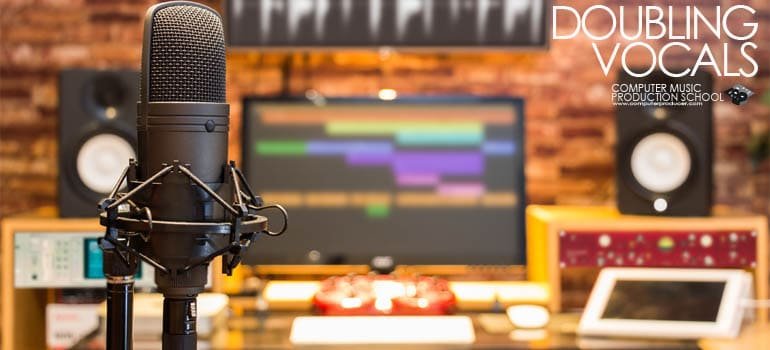How to double track vocals is a common question. Some recording engineers know the power of doubling vocals and others barely play with it. What are double tracked vocals? Double tracked vocals are recording the vocal twice or ‘stacking’ vocals in order to thicken the vocal sound in the recording. Vocal doubling has been traced back to the Beatles when they were on four tracks and recording in mono!
When is vocal doubling called for? In my opinion, vocal doubling can be used all the time unless you have a strong vocalist. If you’re working with Cristina Aguilera or Mariah Carey they are both very dynamic singers. Doubling vocals on a simple hook melody or to emphasize a word is recommended but vocal doubling on a verse vocal would take away the uniqueness of their vocal range.
Double tracked vocals are recommended in most hip hop, reggaeton, dance and pop music productions. The goal is to get the vocalist to execute two really good vocal takes. It’s important to get the first one perfect. If the second vocal take falls short, this is where a great audio engineer can edit the first vocal take to align with the second take. This not only saves the vocalist’s strength but leaves more time for mixing, effects and seasoning.

In this screenshot you can see that each of the vocal stacks are even with each other. These are four vocal stacks. Sometimes on hooks using four stacks gives a thicker sound for the hook vocals to stand out. The idea is to get all the stacks even so the listener doesn’t get distracted by an extra syllable, breath or word.
Mixing vocal recordings with stacks is the last part of how to get a good doubled vocal recording. You’ll want to set the main vocal take to your desired volume. The best way to get a vocal in the pocket is to turn the level down and then gradually life the volume until it gets right in the pocket – not too loud or too soft. Keep that setting for the first perfect vocal take. Now set the vocal doubled takes -8db to -10db before the initial lead vocal. For example, if the lead vocal is at -10db, you’ll set the stacks to be at -18db or -20db. This is a guideline for mixing vocal stacks. Around those decibels you’ll find the sweet spot where the doubled vocals thicken the sound and blend together well.
The goal in using this vocal doubling trick is to get the vocals thick, up front and in your face without hearing the stack. If you hear an echo, the stacks could be turned down. If you hear a reverb, chances are the vocalist didn’t stack the vocals consistently.
To get the best double vocal results, do what I like to call ‘a benchmark vocal test’. Just spend an hour on this trick until you get it sounded great every time. This will save a lot of time during session and give instant results every time when recording vocals.
Remember, you must apply these techniques to get results. It is not enough to read articles all day and never do the work. Applying what you have learned is your personal hands on training. Don’t fall for the hands on training myths in the industry today.
Tutorial: Doubling Vocals
1) Determine if the vocalist has a strong, unique voice and if the song calls for doubled vocals on the verse, hook or on all the parts.
2) Walk the vocalist through what you’re going to do. Get a solid first take, double check and have them listen to make sure they are happy. After completing the first take, start recording to get the stacks. Make sure to listen in detail to make sure all the parts are syncopated.
3) During the mixing phase, remember, you don’t ‘have’ to use all of these stacks. However, having them available always makes great options if the vocals need to sound full on a word, phrase, or all parts. Using these steps will help you get a great sounding vocals on every song.

